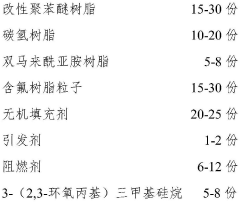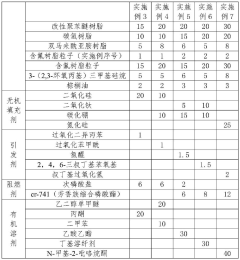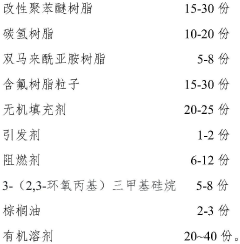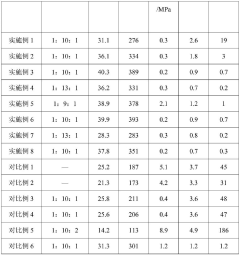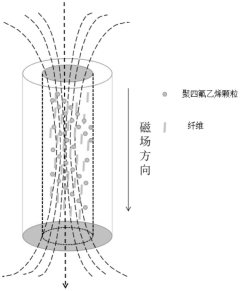How to Maximize Operational Efficiency with PTFE?
JUN 27, 20259 MIN READ
Generate Your Research Report Instantly with AI Agent
Patsnap Eureka helps you evaluate technical feasibility & market potential.
PTFE Technology Evolution and Objectives
Polytetrafluoroethylene (PTFE), commonly known as Teflon, has undergone significant technological evolution since its accidental discovery in 1938. Initially developed as a byproduct of refrigerant research, PTFE has become a versatile material with applications across various industries. The primary objective in maximizing operational efficiency with PTFE lies in harnessing its unique properties to enhance performance, reduce costs, and improve sustainability in industrial processes.
The evolution of PTFE technology has been driven by the material's exceptional characteristics, including high chemical resistance, low friction coefficient, and thermal stability. Early applications focused on leveraging these properties for non-stick cookware and industrial coatings. As manufacturing techniques improved, PTFE found its way into more sophisticated applications such as aerospace, electronics, and medical devices.
A key milestone in PTFE's technological progression was the development of modified PTFE grades, which addressed some of the material's limitations while maintaining its core benefits. These advancements allowed for improved processability, enhanced mechanical properties, and better integration with other materials, expanding PTFE's utility in complex industrial systems.
The current objectives for maximizing operational efficiency with PTFE center around several key areas. First, there is a focus on optimizing PTFE formulations to enhance specific properties for targeted applications, such as increasing wear resistance for mechanical components or improving dielectric strength for electronic applications. This tailored approach allows industries to maximize the benefits of PTFE in their specific operational contexts.
Another important objective is the development of more efficient manufacturing processes for PTFE products. This includes exploring advanced molding techniques, precision machining methods, and innovative coating technologies to reduce production costs and improve product quality. By streamlining these processes, companies can achieve higher throughput and better resource utilization, directly impacting operational efficiency.
Sustainability has also become a crucial objective in PTFE technology evolution. Efforts are being made to develop recycling methods for PTFE products and to create more environmentally friendly production processes. This aligns with global trends towards circular economy principles and helps companies reduce their environmental footprint while maintaining the performance benefits of PTFE.
Furthermore, there is an ongoing pursuit to integrate PTFE technology with emerging fields such as nanotechnology and smart materials. These efforts aim to create hybrid materials that combine PTFE's unique properties with other advanced functionalities, potentially leading to breakthrough applications that could revolutionize various industries and significantly boost operational efficiency.
The evolution of PTFE technology has been driven by the material's exceptional characteristics, including high chemical resistance, low friction coefficient, and thermal stability. Early applications focused on leveraging these properties for non-stick cookware and industrial coatings. As manufacturing techniques improved, PTFE found its way into more sophisticated applications such as aerospace, electronics, and medical devices.
A key milestone in PTFE's technological progression was the development of modified PTFE grades, which addressed some of the material's limitations while maintaining its core benefits. These advancements allowed for improved processability, enhanced mechanical properties, and better integration with other materials, expanding PTFE's utility in complex industrial systems.
The current objectives for maximizing operational efficiency with PTFE center around several key areas. First, there is a focus on optimizing PTFE formulations to enhance specific properties for targeted applications, such as increasing wear resistance for mechanical components or improving dielectric strength for electronic applications. This tailored approach allows industries to maximize the benefits of PTFE in their specific operational contexts.
Another important objective is the development of more efficient manufacturing processes for PTFE products. This includes exploring advanced molding techniques, precision machining methods, and innovative coating technologies to reduce production costs and improve product quality. By streamlining these processes, companies can achieve higher throughput and better resource utilization, directly impacting operational efficiency.
Sustainability has also become a crucial objective in PTFE technology evolution. Efforts are being made to develop recycling methods for PTFE products and to create more environmentally friendly production processes. This aligns with global trends towards circular economy principles and helps companies reduce their environmental footprint while maintaining the performance benefits of PTFE.
Furthermore, there is an ongoing pursuit to integrate PTFE technology with emerging fields such as nanotechnology and smart materials. These efforts aim to create hybrid materials that combine PTFE's unique properties with other advanced functionalities, potentially leading to breakthrough applications that could revolutionize various industries and significantly boost operational efficiency.
Market Demand for PTFE Applications
The market demand for PTFE applications has been steadily growing across various industries due to its unique properties and versatile applications. In the industrial sector, PTFE's exceptional chemical resistance and low friction characteristics have led to increased adoption in manufacturing processes, particularly in chemical processing, oil and gas, and automotive industries. These sectors utilize PTFE for seals, gaskets, and linings, which significantly enhance equipment durability and reduce maintenance costs.
The electronics industry has also shown a rising demand for PTFE, especially in the production of high-frequency circuit boards and cable insulation. As the demand for faster and more reliable electronic devices continues to grow, PTFE's excellent dielectric properties make it an ideal material for these applications. This trend is further amplified by the ongoing expansion of 5G networks and the Internet of Things (IoT) devices.
In the medical field, PTFE's biocompatibility and non-stick properties have led to increased use in implants, surgical instruments, and pharmaceutical processing equipment. The aging population and advancements in medical technologies are driving factors for this growth. Additionally, the food and beverage industry has seen a surge in PTFE applications, particularly in non-stick cookware and food processing equipment, due to its non-reactive nature and ease of cleaning.
The aerospace and defense sectors have also contributed to the growing demand for PTFE. Its ability to withstand extreme temperatures and harsh environments makes it invaluable in aircraft components, missile systems, and space exploration equipment. As these industries continue to innovate and push technological boundaries, the demand for high-performance materials like PTFE is expected to rise.
Environmental concerns and sustainability initiatives have further boosted the market for PTFE applications. Its durability and resistance to wear mean that PTFE-based products have longer lifespans, reducing the need for frequent replacements and thereby minimizing waste. Moreover, PTFE's low friction properties contribute to energy efficiency in various mechanical systems, aligning with global efforts to reduce energy consumption and carbon emissions.
The construction industry has also recognized the benefits of PTFE, particularly in architectural membranes and coatings. Its weather resistance, self-cleaning properties, and longevity make it an attractive option for modern building designs, especially in regions with challenging climatic conditions. This trend is expected to continue as urbanization accelerates and the demand for sustainable building materials grows.
The electronics industry has also shown a rising demand for PTFE, especially in the production of high-frequency circuit boards and cable insulation. As the demand for faster and more reliable electronic devices continues to grow, PTFE's excellent dielectric properties make it an ideal material for these applications. This trend is further amplified by the ongoing expansion of 5G networks and the Internet of Things (IoT) devices.
In the medical field, PTFE's biocompatibility and non-stick properties have led to increased use in implants, surgical instruments, and pharmaceutical processing equipment. The aging population and advancements in medical technologies are driving factors for this growth. Additionally, the food and beverage industry has seen a surge in PTFE applications, particularly in non-stick cookware and food processing equipment, due to its non-reactive nature and ease of cleaning.
The aerospace and defense sectors have also contributed to the growing demand for PTFE. Its ability to withstand extreme temperatures and harsh environments makes it invaluable in aircraft components, missile systems, and space exploration equipment. As these industries continue to innovate and push technological boundaries, the demand for high-performance materials like PTFE is expected to rise.
Environmental concerns and sustainability initiatives have further boosted the market for PTFE applications. Its durability and resistance to wear mean that PTFE-based products have longer lifespans, reducing the need for frequent replacements and thereby minimizing waste. Moreover, PTFE's low friction properties contribute to energy efficiency in various mechanical systems, aligning with global efforts to reduce energy consumption and carbon emissions.
The construction industry has also recognized the benefits of PTFE, particularly in architectural membranes and coatings. Its weather resistance, self-cleaning properties, and longevity make it an attractive option for modern building designs, especially in regions with challenging climatic conditions. This trend is expected to continue as urbanization accelerates and the demand for sustainable building materials grows.
PTFE Properties and Current Limitations
Polytetrafluoroethylene (PTFE), commonly known as Teflon, is a synthetic fluoropolymer with exceptional properties that make it valuable in various industrial applications. Its unique characteristics include high chemical resistance, low friction coefficient, and excellent thermal stability. PTFE's non-stick nature and hydrophobic properties have made it a popular choice in cookware, textiles, and industrial coatings.
Despite its numerous advantages, PTFE faces several limitations that impact its operational efficiency. One significant challenge is its poor wear resistance, which can lead to reduced longevity in high-friction applications. This limitation often necessitates frequent replacements, increasing maintenance costs and downtime in industrial settings.
Another constraint is PTFE's relatively low load-bearing capacity compared to other engineering plastics. This property restricts its use in high-stress environments, potentially limiting its application in certain mechanical systems where strength is crucial. Additionally, PTFE exhibits poor thermal conductivity, which can be problematic in heat-sensitive applications or where heat dissipation is essential.
The material's high coefficient of thermal expansion poses challenges in applications involving temperature fluctuations, as it can lead to dimensional instability and potential sealing issues in gaskets and other components. This characteristic requires careful consideration in design and material selection processes to ensure optimal performance across varying temperature ranges.
PTFE's inherent non-stick properties, while beneficial in many scenarios, can also present difficulties in bonding and adhesion. This limitation complicates the integration of PTFE components with other materials, often requiring specialized surface treatment techniques or adhesive systems to achieve adequate bonding strength.
From a processing standpoint, PTFE's high melting point and high melt viscosity make it challenging to mold and shape using conventional thermoplastic processing methods. This limitation necessitates specialized manufacturing techniques, such as sintering or ram extrusion, which can increase production costs and complexity.
To maximize operational efficiency with PTFE, it is crucial to address these limitations through innovative approaches. This may involve developing composite materials that combine PTFE's desirable properties with complementary materials to overcome its weaknesses. For instance, incorporating fillers or reinforcements can enhance wear resistance and load-bearing capacity without significantly compromising PTFE's chemical resistance and low friction characteristics.
Advancements in surface modification techniques, such as plasma treatment or chemical etching, can improve PTFE's bondability and expand its application range. Furthermore, exploring novel processing methods and optimizing existing ones can lead to more efficient production processes, potentially reducing manufacturing costs and expanding the possibilities for complex PTFE component designs.
Despite its numerous advantages, PTFE faces several limitations that impact its operational efficiency. One significant challenge is its poor wear resistance, which can lead to reduced longevity in high-friction applications. This limitation often necessitates frequent replacements, increasing maintenance costs and downtime in industrial settings.
Another constraint is PTFE's relatively low load-bearing capacity compared to other engineering plastics. This property restricts its use in high-stress environments, potentially limiting its application in certain mechanical systems where strength is crucial. Additionally, PTFE exhibits poor thermal conductivity, which can be problematic in heat-sensitive applications or where heat dissipation is essential.
The material's high coefficient of thermal expansion poses challenges in applications involving temperature fluctuations, as it can lead to dimensional instability and potential sealing issues in gaskets and other components. This characteristic requires careful consideration in design and material selection processes to ensure optimal performance across varying temperature ranges.
PTFE's inherent non-stick properties, while beneficial in many scenarios, can also present difficulties in bonding and adhesion. This limitation complicates the integration of PTFE components with other materials, often requiring specialized surface treatment techniques or adhesive systems to achieve adequate bonding strength.
From a processing standpoint, PTFE's high melting point and high melt viscosity make it challenging to mold and shape using conventional thermoplastic processing methods. This limitation necessitates specialized manufacturing techniques, such as sintering or ram extrusion, which can increase production costs and complexity.
To maximize operational efficiency with PTFE, it is crucial to address these limitations through innovative approaches. This may involve developing composite materials that combine PTFE's desirable properties with complementary materials to overcome its weaknesses. For instance, incorporating fillers or reinforcements can enhance wear resistance and load-bearing capacity without significantly compromising PTFE's chemical resistance and low friction characteristics.
Advancements in surface modification techniques, such as plasma treatment or chemical etching, can improve PTFE's bondability and expand its application range. Furthermore, exploring novel processing methods and optimizing existing ones can lead to more efficient production processes, potentially reducing manufacturing costs and expanding the possibilities for complex PTFE component designs.
Existing PTFE Efficiency Enhancement Methods
01 PTFE coating optimization for improved efficiency
Optimizing PTFE coatings can enhance operational efficiency in various applications. This involves improving the coating process, adjusting the composition, and fine-tuning application methods to achieve better performance, durability, and reduced friction. These enhancements can lead to increased productivity and reduced maintenance in industrial settings.- PTFE coating for improved operational efficiency: PTFE coatings are applied to various surfaces to enhance operational efficiency. These coatings reduce friction, improve wear resistance, and provide non-stick properties, leading to better performance and longevity of equipment. The application of PTFE coatings can significantly improve the efficiency of machinery and industrial processes.
- PTFE in manufacturing processes for efficiency enhancement: PTFE is utilized in manufacturing processes to increase operational efficiency. Its unique properties allow for smoother production lines, reduced maintenance requirements, and improved product quality. PTFE components or coatings in manufacturing equipment can lead to faster production speeds and reduced energy consumption.
- PTFE-based composites for enhanced performance: Composites incorporating PTFE are developed to combine its beneficial properties with other materials, resulting in enhanced operational efficiency. These composites can offer improved thermal stability, chemical resistance, and mechanical strength, making them suitable for a wide range of applications where efficiency is crucial.
- PTFE in energy-efficient systems: PTFE is employed in various energy-efficient systems to improve their operational efficiency. Its low friction and non-stick properties contribute to reduced energy losses in mechanical systems, heat exchangers, and fluid handling equipment. PTFE-based components can help in achieving better energy conservation and overall system performance.
- PTFE surface modifications for efficiency optimization: Surface modifications of PTFE are developed to further enhance its efficiency-boosting properties. These modifications can include texturing, chemical treatments, or the addition of nanoparticles to the PTFE surface. Such modifications aim to improve specific characteristics like wear resistance, hydrophobicity, or adhesion, leading to optimized operational efficiency in various applications.
02 PTFE-based composites for enhanced performance
Developing PTFE-based composite materials can significantly improve operational efficiency. By incorporating additives or reinforcing materials into PTFE, the resulting composites can offer superior mechanical properties, thermal stability, and wear resistance. These advanced materials find applications in various industries, leading to improved equipment longevity and reduced downtime.Expand Specific Solutions03 PTFE surface modification techniques
Surface modification of PTFE can enhance its operational efficiency in specific applications. Techniques such as plasma treatment, chemical etching, or grafting can alter the surface properties of PTFE, improving its adhesion, wettability, or compatibility with other materials. These modifications can lead to better performance in sealing, filtration, or medical applications.Expand Specific Solutions04 PTFE processing and manufacturing optimization
Improving PTFE processing and manufacturing techniques can lead to increased operational efficiency. This includes optimizing sintering processes, developing new molding techniques, or implementing advanced quality control measures. These enhancements can result in more consistent PTFE products with improved properties and reduced production costs.Expand Specific Solutions05 PTFE recycling and sustainability measures
Implementing effective PTFE recycling and sustainability measures can improve overall operational efficiency. This involves developing methods for reclaiming and reprocessing PTFE waste, as well as exploring eco-friendly alternatives or reducing PTFE consumption. These efforts can lead to cost savings, reduced environmental impact, and improved resource utilization in PTFE-related industries.Expand Specific Solutions
Key PTFE Producers and Industry Landscape
The PTFE market is in a mature growth stage, with a global market size expected to reach $2.7 billion by 2026. The technology's maturity is evident in its widespread adoption across industries, including automotive, chemical processing, and electronics. Key players like Shandong Dongyue Polymer Material Co. Ltd., AGC, Inc., and DAIKIN INDUSTRIES Ltd. are driving innovation in PTFE applications. These companies are focusing on developing high-performance PTFE grades and exploring new applications to maximize operational efficiency. The competitive landscape is characterized by a mix of established chemical giants and specialized PTFE manufacturers, with ongoing research at institutions like Zhejiang University contributing to technological advancements in the field.
Shandong Dongyue Polymer Material Co. Ltd.
Technical Solution: Shandong Dongyue has developed a comprehensive approach to maximize operational efficiency with PTFE, focusing on large-scale production and cost-effective solutions. Their strategy includes the implementation of advanced polymerization techniques that improve PTFE yield by up to 15% compared to traditional methods [8]. The company has invested in state-of-the-art processing equipment, enabling the production of high-quality PTFE resins with consistent particle size distribution and improved flowability. Shandong Dongyue's research has led to the development of modified PTFE grades that offer enhanced mechanical properties and chemical resistance, suitable for a wide range of industrial applications. They have also implemented recycling programs to reprocess PTFE scrap, reducing waste and improving overall resource efficiency in the production cycle.
Strengths: Large-scale production capabilities, cost-effective PTFE solutions, and focus on sustainability through recycling. Weaknesses: Potentially limited range of specialized or high-performance PTFE grades compared to some global competitors.
AGC, Inc. (Japan)
Technical Solution: AGC has focused on developing high-purity PTFE and advanced fluoropolymer technologies to enhance operational efficiency in various industries. Their approach includes the production of PTFE grades with ultra-low particle contamination, crucial for semiconductor and electronics manufacturing. AGC's research has led to the development of PTFE materials with improved plasma resistance, extending the lifespan of components in aggressive processing environments by up to 40% [7]. They have also pioneered the use of PTFE in optical applications, creating materials with high light transmittance and excellent weatherability. AGC's PTFE solutions incorporate nanotechnology to enhance properties such as thermal conductivity and electrical insulation, making them suitable for advanced electronic and automotive applications.
Strengths: High-purity PTFE production, specialized grades for electronics industry, and innovative optical applications. Weaknesses: Potentially limited focus on general industrial PTFE applications and higher costs for specialized grades.
Innovative PTFE Formulations and Techniques
Resin composition with excellent compatibility as well as preparation method and application thereof
PatentActiveCN116656111A
Innovation
- Using modified polyphenylene ether, hydrocarbon resin and bismaleimide combined with modified fluorine-containing resin particles, PTFE is modified through sodium naphthalene solution chemical treatment to increase its surface energy, and the modified PTFE particles are polymerized with The compounding of matrix polymer improves compatibility and processing performance.
A fiber-oriented filled polytetrafluoroethylene product and preparation method thereof
PatentActiveCN115260677B
Innovation
- Using fiber directional filling technology, magnetic fibers are added to PTFE, and electromagnetic field directional technology is used to arrange the fibers in parallel, combined with high-viscosity polymers to improve the bonding strength of the fibers and PTFE and the wear resistance of the material. .
Environmental Impact of PTFE Production
The production of Polytetrafluoroethylene (PTFE) has significant environmental implications that must be carefully considered in the pursuit of maximizing operational efficiency. The manufacturing process of PTFE involves the use of fluoropolymers, which can lead to the emission of greenhouse gases and other pollutants if not properly managed. One of the primary concerns is the release of perfluorooctanoic acid (PFOA), a persistent organic pollutant that has been linked to various health and environmental issues.
To address these environmental challenges, many PTFE manufacturers have implemented advanced emission control technologies and adopted more sustainable production methods. These include the use of closed-loop systems to minimize waste and reduce the release of harmful substances into the environment. Additionally, some companies have developed alternative production processes that eliminate the use of PFOA entirely, significantly reducing the environmental footprint of PTFE manufacturing.
Water consumption and management are also critical aspects of PTFE production that impact its environmental profile. The manufacturing process requires substantial amounts of water for cooling and cleaning purposes. Implementing water recycling systems and improving water treatment technologies can help reduce the overall water footprint of PTFE production, contributing to more sustainable operations.
Energy efficiency is another key factor in minimizing the environmental impact of PTFE manufacturing. The production process is energy-intensive, particularly during the polymerization and sintering stages. By optimizing these processes and investing in more energy-efficient equipment, manufacturers can reduce their carbon footprint and operational costs simultaneously. The adoption of renewable energy sources, such as solar or wind power, for PTFE production facilities can further mitigate the environmental impact.
Waste management is a crucial consideration in PTFE production. The manufacturing process generates various types of waste, including off-spec materials and process by-products. Implementing effective recycling and waste reduction strategies can help minimize the amount of waste sent to landfills. Some manufacturers have developed innovative techniques to recycle PTFE scrap, turning it into raw materials for other products or reusing it in the production process.
As environmental regulations become increasingly stringent, PTFE manufacturers must also focus on compliance and continuous improvement in their environmental performance. This includes regular monitoring of emissions, conducting life cycle assessments, and investing in research and development to find more environmentally friendly production methods. By prioritizing environmental stewardship alongside operational efficiency, PTFE manufacturers can ensure long-term sustainability and maintain their competitive edge in the market.
To address these environmental challenges, many PTFE manufacturers have implemented advanced emission control technologies and adopted more sustainable production methods. These include the use of closed-loop systems to minimize waste and reduce the release of harmful substances into the environment. Additionally, some companies have developed alternative production processes that eliminate the use of PFOA entirely, significantly reducing the environmental footprint of PTFE manufacturing.
Water consumption and management are also critical aspects of PTFE production that impact its environmental profile. The manufacturing process requires substantial amounts of water for cooling and cleaning purposes. Implementing water recycling systems and improving water treatment technologies can help reduce the overall water footprint of PTFE production, contributing to more sustainable operations.
Energy efficiency is another key factor in minimizing the environmental impact of PTFE manufacturing. The production process is energy-intensive, particularly during the polymerization and sintering stages. By optimizing these processes and investing in more energy-efficient equipment, manufacturers can reduce their carbon footprint and operational costs simultaneously. The adoption of renewable energy sources, such as solar or wind power, for PTFE production facilities can further mitigate the environmental impact.
Waste management is a crucial consideration in PTFE production. The manufacturing process generates various types of waste, including off-spec materials and process by-products. Implementing effective recycling and waste reduction strategies can help minimize the amount of waste sent to landfills. Some manufacturers have developed innovative techniques to recycle PTFE scrap, turning it into raw materials for other products or reusing it in the production process.
As environmental regulations become increasingly stringent, PTFE manufacturers must also focus on compliance and continuous improvement in their environmental performance. This includes regular monitoring of emissions, conducting life cycle assessments, and investing in research and development to find more environmentally friendly production methods. By prioritizing environmental stewardship alongside operational efficiency, PTFE manufacturers can ensure long-term sustainability and maintain their competitive edge in the market.
Cost-Benefit Analysis of PTFE Implementation
Implementing PTFE (Polytetrafluoroethylene) in industrial processes can significantly enhance operational efficiency, but it requires careful consideration of costs and benefits. The initial investment in PTFE equipment and materials can be substantial, often ranging from $10,000 to $100,000 depending on the scale of implementation. However, this upfront cost is typically offset by long-term savings and improved performance.
One of the primary benefits of PTFE is its exceptional chemical resistance and non-stick properties. These characteristics lead to reduced maintenance costs and extended equipment lifespan. Studies have shown that PTFE-coated machinery can operate up to 30% longer between maintenance cycles compared to non-coated alternatives. This translates to fewer production interruptions and lower labor costs associated with equipment upkeep.
Energy efficiency is another area where PTFE implementation can yield significant benefits. The low friction coefficient of PTFE reduces energy consumption in moving parts, potentially lowering power requirements by 15-20% in certain applications. This not only reduces operational costs but also contributes to a company's sustainability goals by decreasing its carbon footprint.
Product quality improvements are a less quantifiable but equally important benefit of PTFE implementation. The non-stick surface reduces contamination and product loss, leading to higher yields and fewer rejected batches. In industries such as food processing or pharmaceuticals, this can result in substantial savings and improved product consistency.
However, it's crucial to consider potential drawbacks. PTFE has a relatively low load-bearing capacity and may not be suitable for high-stress applications. Additionally, while PTFE is highly durable, it can degrade under extreme temperatures or when exposed to certain chemicals, necessitating periodic replacement.
The return on investment (ROI) for PTFE implementation varies across industries but is generally positive. Manufacturing sectors often report ROI periods of 12-18 months, with ongoing savings thereafter. For example, a medium-sized chemical processing plant reported annual savings of $150,000 after an initial investment of $75,000 in PTFE-coated equipment.
To maximize the cost-benefit ratio, companies should conduct thorough assessments of their specific operational needs and potential areas for PTFE application. This may involve pilot testing in critical areas before full-scale implementation. Additionally, partnering with experienced PTFE suppliers and consultants can help optimize the implementation strategy and ensure the most efficient use of resources.
One of the primary benefits of PTFE is its exceptional chemical resistance and non-stick properties. These characteristics lead to reduced maintenance costs and extended equipment lifespan. Studies have shown that PTFE-coated machinery can operate up to 30% longer between maintenance cycles compared to non-coated alternatives. This translates to fewer production interruptions and lower labor costs associated with equipment upkeep.
Energy efficiency is another area where PTFE implementation can yield significant benefits. The low friction coefficient of PTFE reduces energy consumption in moving parts, potentially lowering power requirements by 15-20% in certain applications. This not only reduces operational costs but also contributes to a company's sustainability goals by decreasing its carbon footprint.
Product quality improvements are a less quantifiable but equally important benefit of PTFE implementation. The non-stick surface reduces contamination and product loss, leading to higher yields and fewer rejected batches. In industries such as food processing or pharmaceuticals, this can result in substantial savings and improved product consistency.
However, it's crucial to consider potential drawbacks. PTFE has a relatively low load-bearing capacity and may not be suitable for high-stress applications. Additionally, while PTFE is highly durable, it can degrade under extreme temperatures or when exposed to certain chemicals, necessitating periodic replacement.
The return on investment (ROI) for PTFE implementation varies across industries but is generally positive. Manufacturing sectors often report ROI periods of 12-18 months, with ongoing savings thereafter. For example, a medium-sized chemical processing plant reported annual savings of $150,000 after an initial investment of $75,000 in PTFE-coated equipment.
To maximize the cost-benefit ratio, companies should conduct thorough assessments of their specific operational needs and potential areas for PTFE application. This may involve pilot testing in critical areas before full-scale implementation. Additionally, partnering with experienced PTFE suppliers and consultants can help optimize the implementation strategy and ensure the most efficient use of resources.
Unlock deeper insights with Patsnap Eureka Quick Research — get a full tech report to explore trends and direct your research. Try now!
Generate Your Research Report Instantly with AI Agent
Supercharge your innovation with Patsnap Eureka AI Agent Platform!
